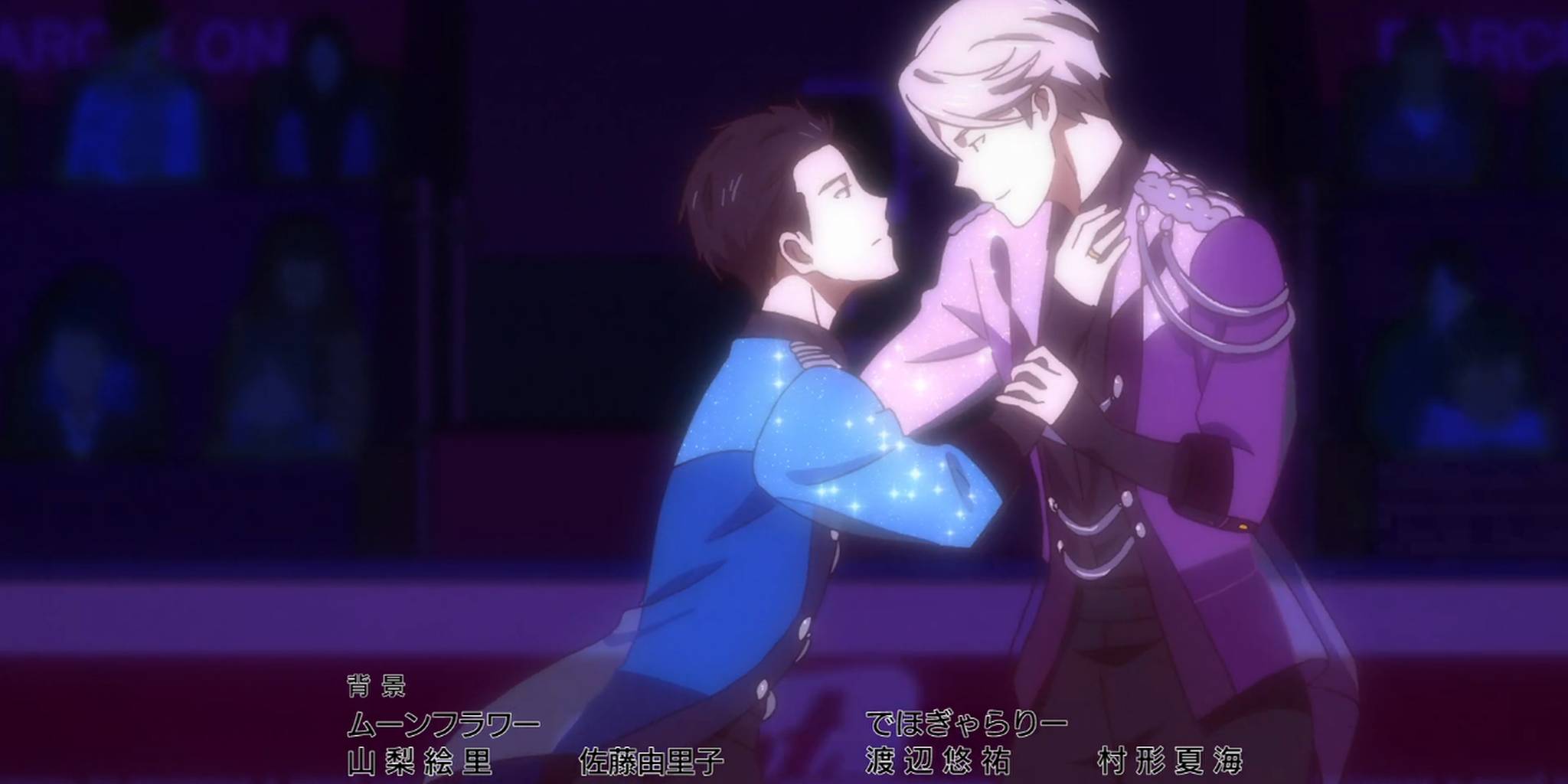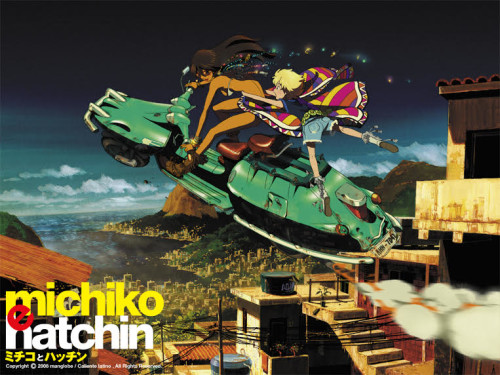This guest post written by Hannah Collins appears as part of our theme week on Women Directors.
The meteoric global success of Mokoto Shinkai’s feature-length anime, Your Name, coupled with recent news that anime streaming service, Crunchyroll, now has over 1 million subscribers, might lead most to believe that the anime machine is chugging along nicely at the moment. The reality is unfortunately very different for those doing all the hard work to keep that machine churning to meet rabid fan demand. These success stories punctuate a general aura of “doom and gloom” that has hung over the Japanese animation industry for several years now. The workload is unreasonably high, the pay is unreasonably low, and intense pressure to succeed has even proved fatal for some.
Industry legend and beloved grandfather of anime, Hayao Miyazaki, isn’t known for his sunny disposition at the best of times in regards to the future of his trade, made all the more evident by this tweet in 2011. Surprise, surprise — the “end times” for a male-dominated field are apparently signaled by women trying to muscle their way in. Miyazaki wrote:
“They say it’s over for animation in Japan. When we look for new hires only women respond, and I get the feeling that we’re done for. In our last hurrah we borrow from outside staff (i.e. outsource), but soon we won’t be able to do that forever.”
Considering his championing of strong-willed, independent heroines throughout his body of work, this statement was all the more disheartening. Working in such a toxic environment is tough enough, but for Japan’s female population, who still earn up to 30% less than their male counterparts (60% less for working mothers) and are now even labeled as symptoms of its stagnation by male industry leaders, the odds are doubly stacked against them to survive.
Thankfully, this hasn’t stopped animator/director Sayo Yamamoto from not only surviving over the past two decades — but thriving. And in style. Like Attack on Titan, Yamamoto’s Yuri!!! On Ice has become a breakout hit, and amazingly, it’s only her third time as a series director. For those who’ve only dipped their toe into the weird and wonderful world of “Japanimation,” her name might not ring any bells, but the shows and films she’s worked on prior to Yuri!!! On Ice most likely will. Beginning with CLAMP’s “X” in 2001, Yamamoto has storyboarded and/or directed episodes of some of the most popular shows of the past decade, including Space Dandy, Psycho-Pass, Highschool of the Dead, Gunslinger Girl, Eureka Seven, Death Note, Ergo Proxy and Attack On Titan, as well as films Redline and Neon Genesis Evangelion: 2.0 You Can (Not) Advance.
In 2004, she got her first big break as a director, helming several episodes of Samurai Champloo under the tutelage of the legendary Shinichiro Watanabe (Cowboy Bebop), an experience that would prove to be hugely influential on her. In the screencaps below, you can see her playful experiments with different styles developing through her work.
Fast-forward four years, Yamamoto is given her next even bigger break: an opportunity to direct a whole series. This was 2008’s Michiko & Hatchin, an action-packed, crime-caper across a Brazilian-inspired land that saw the young and sheltered, Michiko, team up with the dangerous and sultry, Hana, in search of a missing man from their pasts.
Though the series was sadly financially unsuccessful, it garnered enough praise for Yamamoto to be offered another series in 2012, commemorating the 40th anniversary of Lupin III. Never one to follow expectation, Yamamoto opted to craft an origin story, not around the eponymous gentleman thief, but around his love interest and rival, Fujiko Mine, instead. This became the cult series, The Woman Called Fujiko Mine. Similarly to Michiko & Hatchin, Yamamoto was given full creative freedom, allowing her bold, pop art-inflected visuals and thematic fixations — feminine sensuality, comedy, multiculturalism and complex, queer relationships — to begin to blossom.
Yamamoto’s continuing exploration of eroticism through a female gaze is particularly important within a medium infamous for leering “panty shots” and unwanted groping being normalized and excused as “fan service,” with too many female characters swinging between either hypersexualisation or infantilization. During an AnimeFest panel in 2012, Yamamoto made no secret of what attracted her to Fujiko Mine as a character:
“In almost every chapter or episode [of ‘Lupin’] there were some sort of naked female somewhere in there. I felt that the recent TV series animation was really aimed at kids, made intentionally with kids in mind. So I wanted to go back in history and bring back the original manga, how I felt it was intended to be entertaining to adults. […] When I was growing up watching Fujiko in the original series of ‘Lupin’, I always watched her with anticipation of when she was going to take off her clothes.”
The key word here is “adult.” Sexual content alone is not the problem; it’s the context and tenor of that content. Too often in anime and manga, sexuality and “ecchi” humor fixate on teenage characters with a similarly teenage sensibility. Yamamoto, however, crafts stories about adults for adults, with a suitably mature and artful understanding of the power and mystique of sensuality — both heterosexual and queer.
Considering Yamamoto’s female-focused track record, directing a series like Yuri!!! On Ice — a show about professional male ice skaters — seemed like an odd move. But, despite men taking center-stage, Yamamoto was characteristically careful not to underrepresent women throughout the series. Also, considering the show falls into the shonen-ai or “Boys Love” (BL) genre (stories about queer male relationships created by and for women) a woman director and storyboarder (Mitsurou Kubo) team was also a logical move. As fans of BL stories like myself know, the genre has long been plagued by problems of the kind of festishization that always seems to sadly come part and parcel of hetero-appropriation of LGBTQ stories. But in the hands of Yamamoto and Kubo, Yuri!!! On Ice thankfully dodges most of this, managing instead to channel Yamamoto’s skillful handling of comedy and adult eroticism into protagonist Yuri Katsuki’s journey of self-discovery with complexity and sensitivity. Aside from the dazzlingly choreographed skating, it’s this competent handling that’s been key to enthralling the show’s fans.
Episode three is particularly pivotal in Yuri’s journey, as he is challenged by his skating idol, Victor Nikiforov, to perform a program titled, “On Love: Eros.” To tackle his severe lack of confidence in his ability to channel the “eroticism” needed for the routine, Yuri imagines a story about an 18th century “playboy,” which Yamamoto and Kubo animate beautifully using a sketchy, shadow-puppet technique to accentuate the fairy tale aspect of the story.
Reflecting upon the narrative he created, Yuri begins to realize that he identifies with both the feminine and masculine characters, a revelation that empowers him both on and off the rink. During his first performance, he compares himself to a “woman” skater and makes the suave and handsome Victor the object of his seducing. The costume Yuri chooses to wear during competitions visually reinforces all this — a replica of one that Victor once wore, incorporating both masculine and feminine elements into its design with a half-skirt layered over the trousers.
Yamamoto’s success as a woman director shouldn’t be the exception to the rule in the anime industry. A report from the Women in Animation (WIA) board formed by The Animation Guild found that a staggering 84% of roles in animation were taken by men and 16% by women in 2006. By 2015, this ratio had shifted slightly to 80% men and 20% women, with just 10% of animation directors/producers being women. Though these figures come from American studios, a comment made by Yamamoto during AnimeFest seemed to corroborate a similar — or worse — gender imbalance in Japan:
“At the time that I started work on ‘Michiko & Hatchin’ [in 2008] there were only about 5 female directors. But as I moved on to ‘Lupin’, I do feel the female influence on the industry is definitely increasing and growing.”
Her optimism is shared by Naoko Yamada (A Silent Voice) who is currently the youngest female director of feature-length anime. In a recent interview, Yamada shared this advice to women hoping to beat the considerable odds stacked against them:
“There’s no limit in a creative industry, so just look at what you like and create and make what you like to create and just be passionate about it.”
The immense popularity of Yuri!!! On Ice and the positive reception of Yamada’s A Silent Voice proves that Miyazaki’s fears are completely misplaced. Female directors and animators are not symptomatic of the anime industry’s failings. Rather — if given enough opportunity, encouragement and fairer wages — they could instead be the driving force behind its salvation.
See also at Bitch Flicks:
Michiko to Hatchin: Anime’s Newest Mom Has Some Issues
Hannah Collins is a London-born writer and illustrator fascinated by the intersection between pop/visual culture and feminism. On the blogging scene, Hannah has attracted over 1 million readers to her blog on gender representation in pop culture. By day, she is currently a freelance illustrator for children’s books and comics, and by night (and any other available hour) she contributes to the Cosmic Anvil and Fanny Pack blogs, as well as her own.












